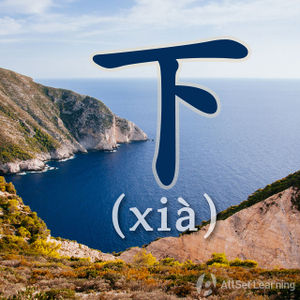Defining upper and lower limits
Revision as of 07:22, 30 August 2017 by ChenShishuang (talk | contribs)
| This article is a stub. Editors can help the Chinese Grammar Wiki by expanding it. |
Contents
以上 and 以下
两个都是方位词。 1)表示级别、次序、数目等在某一点之上或之下。 2)指代前面说过的或下面要说的话,偏书面语。
Structure
级别 / 次序 / 数目 + 以上 / 以下
Examples
- 我 老家 空气 还 不错,PM2.5 一般 在 五十 以下 。The air in my hometown is good. PM 2.5 is generally under 50.
- 我们 需要 有 两 年 以上 工作 经验 的 人 。We need people with two years of working experience or more.
- 十 岁 以下 的 孩子 不用 买 票 。Children under the age of 10 do not need to buy tickets.
- 我们 出差 都 住 三 星级 以上 的 酒店。When we go on business trips, we stay at hotels with at least a 3-star rating.
- 这里 的 冬天 气温 都 在 零度 以下 。This winter, the temperature has been less than 0 degrees.
- 以下 就 谈谈 这个 问题 应该 怎么 解决。In the following conversation, we will discuss how we should resolve this problem.
- 以上 只 是 我 个人 的 看法 。The following is just my personal opinion.
以内 and 以外
以内:方位词。在一定的时间、处所、数量、范围的界限之内。 以外:方位词。在一定的时间、处所、数量、范围的界限之外。"以外"常常跟"除了"连用。
Structure
时间 / 处所 / 数量 / 范围 + 以内 / 以外
Examples
- 两 天 以内 必须 完成 。Must be completed in two days or less.
- 半 小时 以内 能 送到 吗 ?Can you deliver in 30 minutes or less?
- 这个 大楼 50 米 以内 不 能 停车 。You cannot park within 50 meters of this building.
- 请 你 站 在 两 米 以外 的 地方 。Can you stop 2 meters outside of this place?
- 这个 区 以外 的 几 个 区 都 不 太 发达 。All of the areas outside this one are not very developed.
- 除了 三 四 年级 的 学生 以外 ,五 年级 的 学生 也 可以 参加 。Aside from the students in Grade Three and Grade Four, students in Grade Five can also participate.
See also
Sources and further reading
Books



